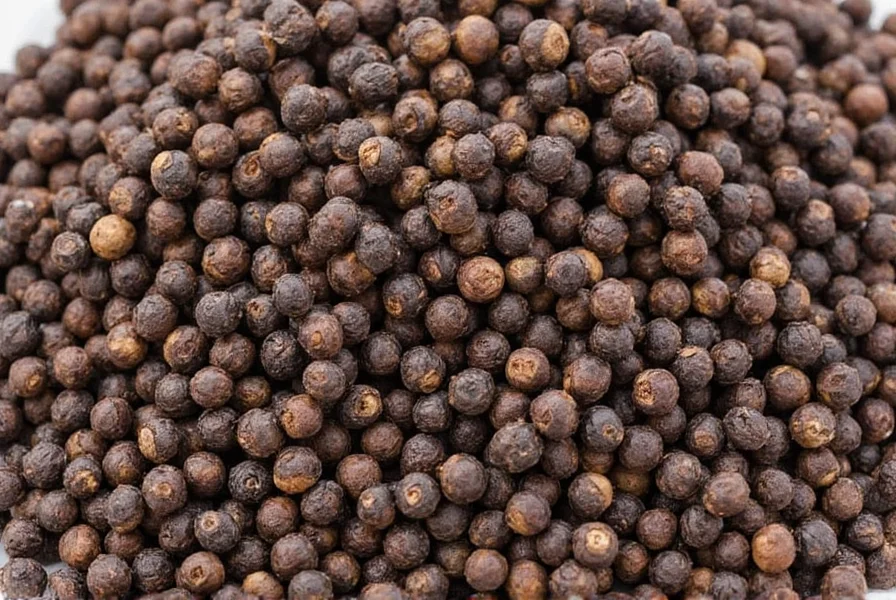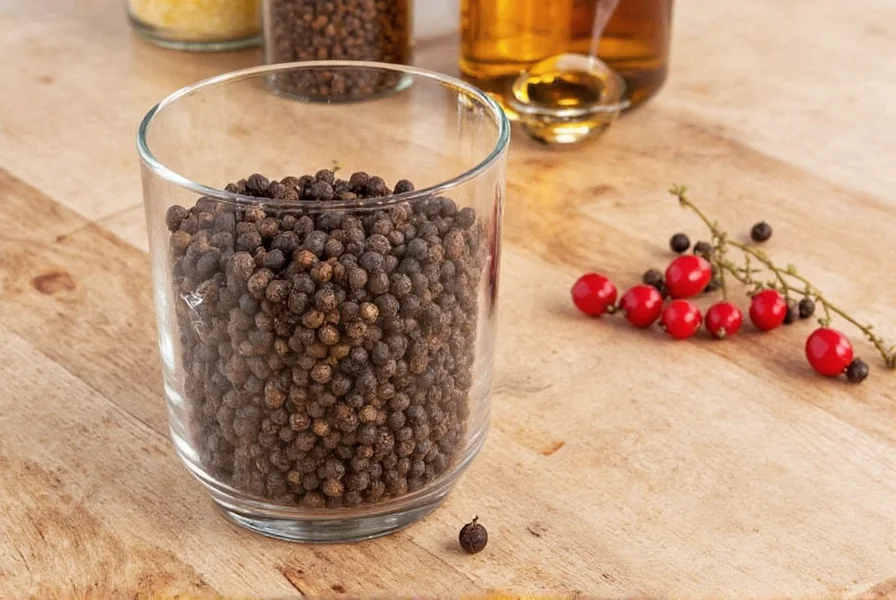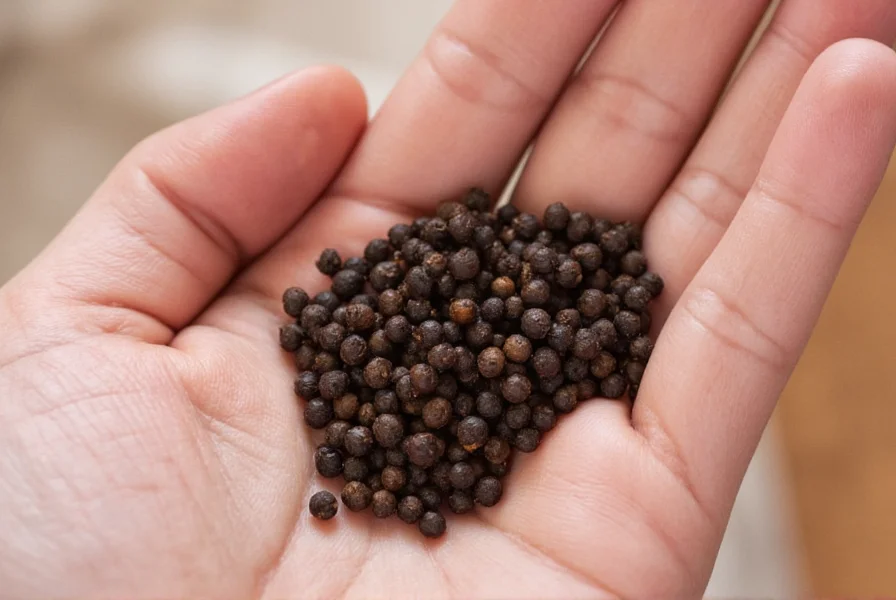Understanding how black pepper is made reveals one of the world's oldest and most beloved spice production processes. This culinary staple has journeyed from tropical vine to kitchen staple through a method largely unchanged for centuries. The transformation from fresh berry to pungent seasoning involves precise timing and traditional techniques that maximize flavor development while preserving the spice's essential oils.
The Piper Nigrum Plant: Source of Black Pepper
Black pepper originates from Piper nigrum, a flowering vine native to South India's Malabar Coast. This perennial plant thrives in tropical climates with consistent rainfall and partial shade. The vine produces small flowers that develop into green berry clusters, each containing a single seed. These berries serve as the raw material for all pepper varieties, with processing methods determining whether they become black, white, green, or red pepper.

Pepper Cultivation Process
Pepper cultivation requires specific growing conditions that mimic its natural habitat. Farmers typically plant Piper nigrum near trees that provide necessary shade or install trellis systems. The vines begin producing berries after 3-4 years and can continue yielding for up to 30 years with proper care. Experienced growers understand that soil composition, humidity levels, and elevation significantly impact the final flavor profile of the black pepper.
Harvesting: Timing is Everything
The harvesting process determines pepper quality. For black pepper production, farmers pick the berry clusters when the fruits begin turning from green to yellow—just before full ripeness. This timing is critical because unripe berries contain higher concentrations of piperine, the compound responsible for pepper's heat. Harvesting occurs early in the morning when temperatures are cooler to preserve essential oils. Skilled workers hand-pick clusters to avoid damaging the vines, as mechanical harvesting would compromise quality.
Traditional Black Pepper Processing Method
The distinctive black color and robust flavor develop during processing. After harvest, producers follow these precise steps:
| Processing Stage | Duration | Key Transformation |
|---|---|---|
| Sorting and cleaning | 1-2 hours | Removal of debris and damaged berries |
| Initial sun-drying | 1-2 days | Berry skins begin to wrinkle and darken |
| Turning and spreading | Multiple times daily | Ensures even drying and prevents molding |
| Final drying | 7-14 days total | Berries shrink to 1/4 original size, turning black |
During sun-drying, enzymatic reactions occur as the berries lose moisture. The outer layer (pericarp) darkens through oxidation while the inner seed remains hard. This process develops the characteristic pungency and complex flavor notes that distinguish high-quality black pepper. Traditional producers spread berries on mats or concrete surfaces in thin layers, turning them regularly to ensure uniform drying.
How Black Pepper Differs From Other Pepper Varieties
Understanding how black pepper is made becomes clearer when comparing it to other pepper types from the same plant:
- White pepper: Made from ripe berries with the outer layer removed through soaking
- Green pepper: Unripe berries preserved through freeze-drying or sulfur dioxide treatment
- Red pepper: Fully ripe berries dried without fermentation
The critical difference lies in harvest timing and processing. Black pepper's unique characteristics emerge from drying unripe berries, creating a more complex flavor profile than other varieties. This traditional black peppercorn production method preserves volatile oils that would evaporate with artificial drying methods.
Quality Factors in Black Pepper Production
Several elements determine the quality of black pepper:
- Harvest timing: Berries picked at the precise moment of near-ripeness yield optimal piperine content
- Drying conditions: Natural sun-drying at temperatures below 40°C preserves essential oils
- Processing duration: Properly dried peppercorns contain 12-14% moisture content
- Sorting standards: High-grade pepper shows uniform color and size with minimal defects
Expert producers monitor these factors carefully throughout the black pepper manufacturing process. The best peppercorns display a uniform dark brown to black color, feel heavy for their size (indicating proper drying), and emit a sharp, complex aroma when crushed.

From Farm to Kitchen: The Distribution Process
After processing, black peppercorns undergo rigorous quality control before reaching consumers. Producers sort by size and color, removing defective berries. The highest grades enter specialty markets, while commercial grades may be ground immediately. Whole peppercorns maintain freshness significantly longer than pre-ground pepper, preserving volatile compounds that create black pepper's distinctive aroma and heat. Understanding the complete black pepper production chain helps consumers appreciate why freshly ground pepper from quality whole peppercorns delivers superior flavor compared to pre-ground alternatives.
Common Misconceptions About Black Pepper
Several myths persist about black pepper production. Contrary to popular belief, black pepper isn't artificially colored—the dark hue develops naturally during sun-drying. Additionally, the spiciness doesn't come from added ingredients but from piperine concentration, which varies based on growing conditions and processing methods. Another misconception suggests all black pepper is the same; in reality, terroir significantly impacts flavor profiles, with peppercorns from different regions offering distinct aromatic notes and heat levels.
Preserving Black Pepper's Quality at Home
To maintain the complex flavors developed through the careful black pepper making process, store whole peppercorns in airtight containers away from light and moisture. Grinding peppercorns immediately before use releases maximum flavor and aroma compounds that dissipate quickly in pre-ground pepper. Properly stored whole peppercorns retain optimal quality for 2-3 years, while pre-ground pepper loses potency within months.
What's the difference between black pepper and white pepper production?
Black pepper comes from unripe berries that are sun-dried with their outer layer intact, while white pepper is made from ripe berries that have had their outer layer removed through soaking. This processing difference creates distinct flavor profiles—black pepper has a more complex, robust flavor with floral notes, while white pepper offers a cleaner, sharper heat.
Why does black pepper turn black during processing?
The black color develops naturally during sun-drying through enzymatic browning. When unripe green berries are exposed to air and sunlight, enzymes in the outer layer react with oxygen, causing the pericarp to darken. This process also develops piperine, the compound responsible for pepper's pungency, creating the characteristic black peppercorn appearance and flavor.
How long does the black pepper production process take?
The complete black pepper processing timeline spans 7-14 days. After harvesting unripe berries, producers sort and clean them within hours. The critical sun-drying phase requires 7-14 days of careful monitoring, with berries turned multiple times daily. High humidity may extend drying time, while excessive rain can damage the crop. Traditional producers never rush this process, as proper drying determines final quality.
Can black pepper be made without sun-drying?
While some commercial producers use mechanical drying to accelerate production, traditional black pepper requires sun-drying. Artificial drying at high temperatures destroys volatile oils and creates a harsher, less complex flavor. The slow sun-drying process allows enzymatic reactions to develop the nuanced flavor profile characteristic of quality black pepper. This natural method preserves the essential oils that give properly processed black pepper its distinctive aroma and balanced heat.
What makes some black pepper hotter than others?
Pepper heat primarily depends on piperine concentration, which varies based on growing conditions and processing. Factors affecting heat level include harvest timing (earlier harvests yield more piperine), drying duration (longer drying concentrates piperine), and geographical origin (soil composition and climate affect chemical development). Higher quality black pepper often has more balanced heat with complex flavor notes rather than just intense spiciness.
Understanding Black Pepper Production Enhances Culinary Experience
Knowing how black pepper is made transforms how we appreciate this everyday spice. The careful balance of harvest timing, natural drying, and quality control creates a product that has enhanced cuisines worldwide for millennia. By understanding the traditional black pepper production process—from vine to peppercorn to kitchen—consumers can make more informed choices about the quality they bring to their cooking. The next time you reach for that pepper grinder, remember the centuries-old techniques and natural processes that deliver that distinctive aroma and flavor to your dishes.











 浙公网安备
33010002000092号
浙公网安备
33010002000092号 浙B2-20120091-4
浙B2-20120091-4